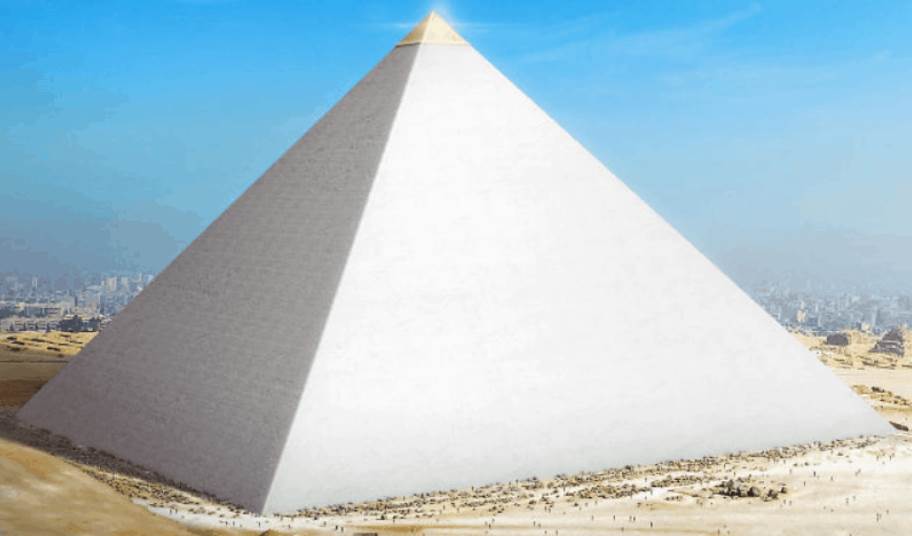If you think about pyramids, you instantly think about Egypt. Rightly so as the ancient Egyptian civilization left us with some remarkable pyramids and a lot of artifacts.
It’s the level of sophistication that mesmerizes most people because these structures were built so long ago and there isn’t any sign that they had the modern tools one would believe are needed to elevate these immense structures.
Here’s a a list of what we believe are the top 9 facts about Egyptian Pyramids.
1. What Was The Oldest Pyramid built in Egypt?
When we hear the word pyramid, we kind of know that these structures are at least a couple of thousand years old.
Did you know that the oldest pyramid was built in the 27th century B.C.?
The pyramid of Djoser in Saqqara also referred to as the “step Pyramid”, was built for (you guessed it) the burial of Pharaoh Djoser and is considered to be the first large-scale construction made of stone in the world.
The pyramid at the time was about 62.5 meters tall (205 ft) and had a diameter of over 105 meters (over 300 ft).

2. How Many Pyramids Are There In The World?
First of all, we all know that Egypt is the land of the Pyramids. Egypt, however, isn’t the only country in which ancient civilizations built pyramids.
In Egypt alone, there are about 118 known pyramids.
In the entire world, however, there have been over 5,000 pyramids been built, ranging from other African countries to countries in South and Middle- America. The exact number of how many pyramids there are is unknown.
One famous example of these Mesoamerican pyramids is the pyramid of Cholula in the south of Mexico.
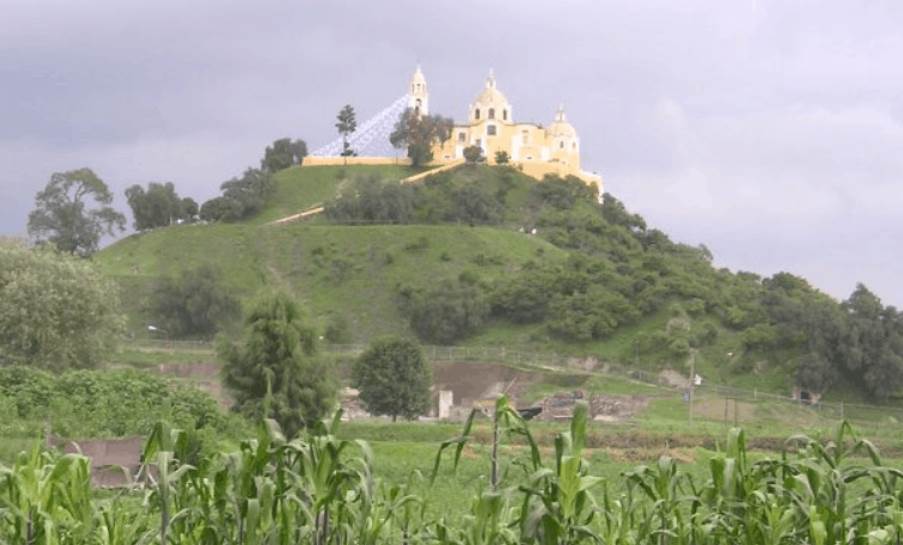
3. Slaves didn’t build Egyptian Pyramids
It was long assumed that the building of the pyramids was done by slaves. The construction was done by the best workers from all over Egypt and was paid a salary, just as how construction workers today are paid for their labor.
Back in 2010, 4,000-year-old burial plots with skeletons were discovered which proves that the laborers weren’t slaves.
The main reason for this assumption is the fact that the workers were given a proper burial, with jugs and cans of beer to accompany them for the afterlife.
There is no way that slaves would have been given this honor.
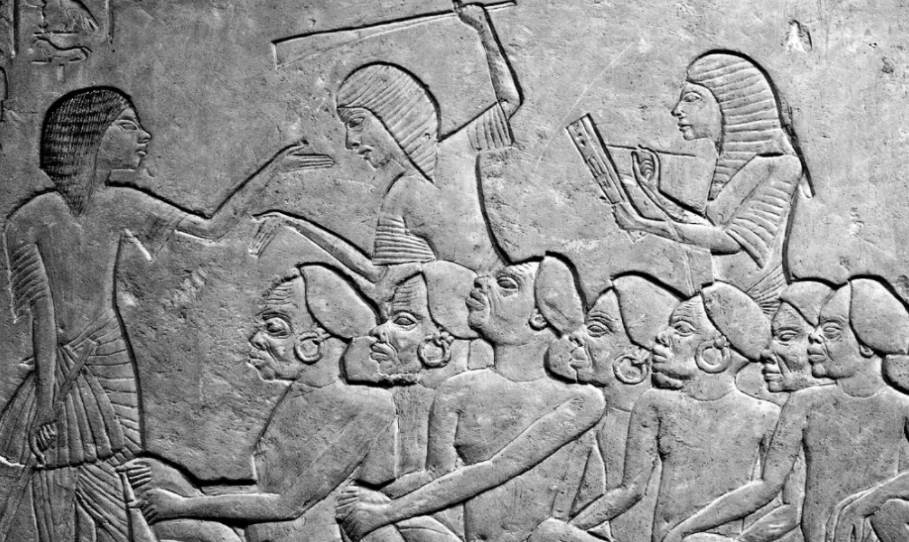
4. Constant Temperature Inside Egyptian Pyramids
It’s a hot sweltering day in ancient Egypt. The sun is burning your skin and the heat reaches up to 50 degrees Celsius.
You would imagine that inside pyramids, the temperature would be even higher, resembling an ancient oven.
You would be wrong. Amazingly enough, the temperature inside the core of the pyramid never goes above or below 20 degrees Celsius, something we refer to as the perfect office temperature.
No need for modern air conditioning was needed for Pharaos entering the afterlife.

5. Pyramids Are Immensely Heavy
We all understand that the building of these pyramids in ancient times would have been the labor of thousands of motivated workers doing the back-breaking work day in and day out.
The best way we can illustrate this is by explaining how much these structures weigh.
Let’s take the Great Pyramid of Khufu as an example. This pyramid weighs a whopping 5.75 million tons (1 ton is 1000 kilos)! It consists out of 2.3 million blocks of sandstone, each weighing about 2.5 tons.
These numbers are simply dazzling.
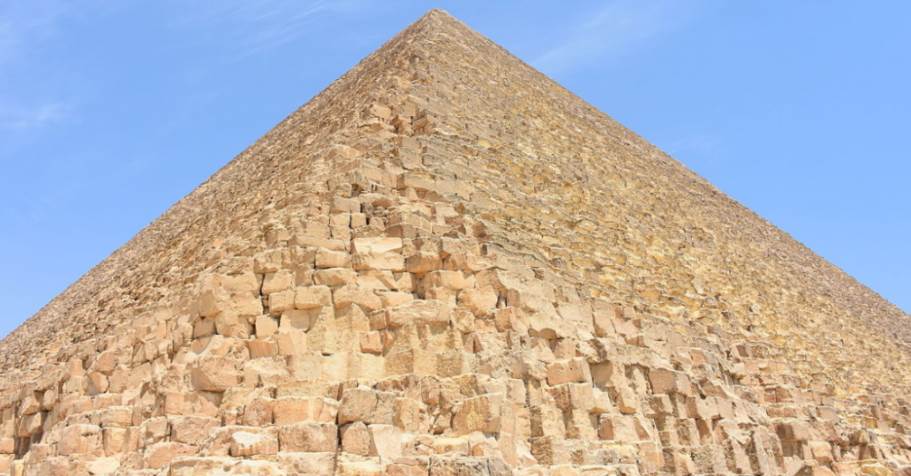
6. 7 Wonders Of The Ancient World
The Great Pyramid of Khufu, also known as the Great Pyramid Of Giza, is not only the oldest of the 7 wonders of the ancient world, it’s also the only one that is still standing.
The other 7 wonders are the Hanging Gardens of Babylon, the Temple of Artemis, the Statue of Zeus at Olympia, the Mausoleum at Halicarnassus, the Colossus of Rhodes, and the Lighthouse of Alexandria.
Another interesting fact, the first lists of seven wonders of the ancient world date from the 2nd-1st century B.C.

7. How Were The Pyramids Built?
One thing is clear, stones were carved from big groves, and moved up the Nile river to the location the pyramids were built.
But how did the ancient Egyptians build the structure, meaning moving blocks weighing over 2.5 tons up a structure over 100 meters high?
The fact that this could be done lets us assume that this ancient civilization was way more advanced than we can ever imagine.
Up until this day, the methods used by the ancient Egyptians to build the pyramids are a topic of debate amongst archeologists and scientists alike.
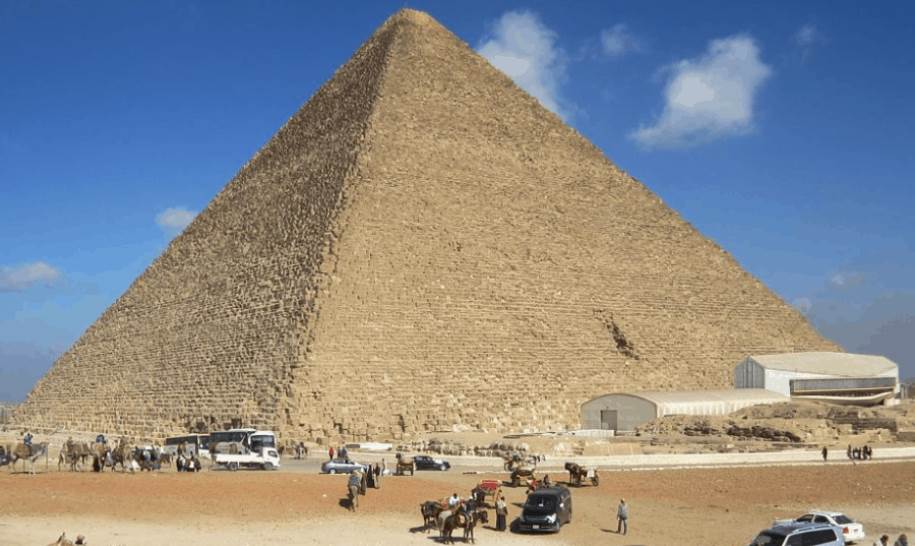
8. Destroying Egyptian Pyramids Is An Impossible Task
For as much work it took to build these colossal structures, it probably takes even more work to destroy them. The proof is the fact that the big Pyramid Of Giza still stands as the only one of the 7 wonders of the ancient world.
But there’s more to the story.
Al-Aziz Uthman, born in 1171, was the second Ayyubid Sultan of Egypt. During his reign, he tried to destroy the great Pyramids of Giza.
He didn’t succeed. The best he could do was partially damage the Menkaure Pyramid, the smallest of the 3 pyramids at Giza, resulting in this:
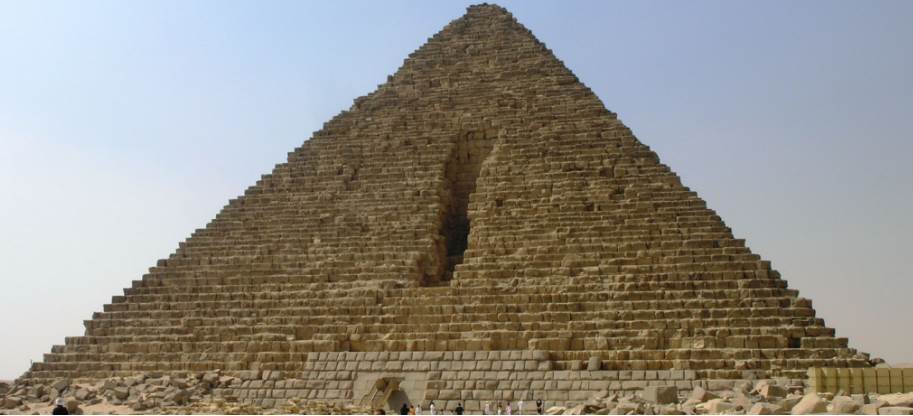
9. Pyramids Were White
When we think of Egyptian pyramids, we think of old, dusty, brownish-looking structures that are crumbling away.
When they were built, they were polished with white limestone, which would effectively have made them shine when sunlight struck them (which was most of the time).
It appears that the shiny pyramids could have been seen from thousands of miles away, all the way from mountains in Israël and some speculate, just like the big wall of China, even from the moon.
In ancient Egypt, the pyramids would have looked completely white, something like this:
